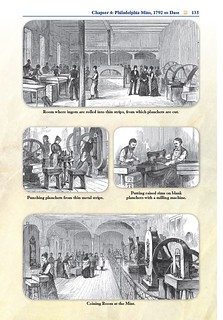
PREV ARTICLE
NEXT ARTICLE
FULL ISSUE
PREV FULL ISSUE
NEW BOOK: GUIDE BOOK OF THE UNITED STATES MINT
Dennis Tucker of Whitman Publishing submitted this article about a new title on the U.S. Mint. Thanks! -Editor
Exploring the Mints of the United States—From Colonial Days to the Present
The Mint is, quite simply, a big and important part of American life.
Still, even longtime collectors might not know how the Mint operates, how coinage designs come to be, how coins are distributed, and the million moving parts that make our national mint facilities run. Meanwhile, outside the hobby community the Mint seems perpetually misunderstood. Non-numismatists sometimes think the Mint makes our nation’s paper currency. Hollywood’s 1967 madcap romp Who’s Minding the Mint? includes the spectacle of George Washington dressed as Milton Berle (or vice versa) surrounded by printing presses cranking out $100 bills. Some people think that it’s the Federal Reserve, not the Mint, that makes coins. Few non-numismatists could name all the American cities that are home to the modern Mint’s coinage factories. And most don’t realize that the famous gold depository at Fort Knox is part of the Mint, or that a huge amount of silver is stored in scenic West Point. 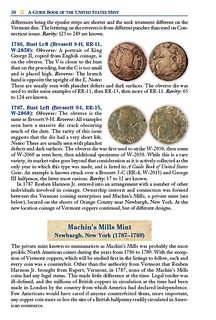 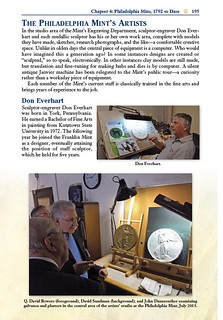
Prior to Q. David Bowers’s new Guide Book of the United States Mint (making its debut in October 2016), many volumes had been written about American coinage, and about individual mint facilities. However, at Whitman Publishing we’ve seen the need for a single authoritative history of not just the modern (post-1872) U.S. Mint, but also of the early Mint, plus each of its branches, and the many private and territorial mints and assay offices that provided local and regional “coins” (from colonial days up to the 1860s) in places where official money was scarce. Here are just a few of the predecessors to the Guide Book of the United States Mint: ◊ Colonial coins and tokens and early American patterns (dating from before 1792, when the federal mint was established under the management of the Department of State) were studied in classic texts such as Sylvester S. Crosby’s The Early Coins of America, published in 1875. Q. David Bowers’s Whitman Encyclopedia of Colonial and Early American Coins, 2009, discussed the colonial minters in a single-source reference containing the latest research. ◊ Philadelphia coin collector Andrew Madsen Smith published an Illustrated History of the U.S. Mint, which was released in later editions (over the course of nearly 20 years starting in the 1880s) by bookstore and gift-shop owner George G. Evans, who sold it to tourists and visitors. Frank H. Stewart published his History of the First United States Mint, Its People and Its Operations—an important reference about the Philadelphia Mint—in 1924. Stewart, his book, and the first U.S. mint were explored in great depth by Leonard Augsburger and Joel Orosz in The Secret History of the First U.S. Mint, published in 2011 and subtitled How Frank H. Stewart Destroyed—And Then Saved—A National Treasure. ◊ Neil Carothers (Fractional Money, 1930) and Don Taxay (U.S. Mint and Coinage, 1966) also wrote about the early Philadelphia Mint and its coins. ◊ Clair M. Birdsall wrote two studies of the history and coinage of the U.S. branch mints at Dahlonega (Georgia) and Charlotte (North Carolina), published in 1984 and 1988 respectively. ◊ Coin dealer and collector Rusty Goe has researched and written extensively on the history of the Carson City Mint. ◊ Numismatic historians Richard G. Kelly and Nancy Y. Oliver have written on many Mint-related topics, including the branch mint at San Francisco. ◊ Michael F. Moran’s books Striking Change (2007) and 1849: The Philadelphia Mint Strikes Gold (2016) explore the inner workings of the Philadelphia Mint from its early days to the “Renaissance” era of President Theodore Roosevelt and sculptor Augustus Saint-Gaudens. ◊ Richard Doty’s America’s Money, America’s Story provides colorful background to the nation’s coins and its mints. ◊ Roger W. Burdette’s work, shared in his “Renaissance of American Coinage” trilogy and the Journal of Numismatic Research among other places, shines light on many previously unpublished aspects of the Mint. For his Guide Book of Peace Dollars Burdette interviewed many old-time employees of the Denver Mint, where the 1964 Peace dollar was struck. ◊ David W. Lange wrote the History of the United States Mint and Its Coinage, a richly illustrated and engaging study published in 2006—perhaps the closest in scope to Bowers’s Guide Book of the United States Mint. ◊ My own American Gold and Silver: U.S. Mint Collector and Investor Coins and Medals, Bicentennial to Date (published 2016) offers behind-the-scenes coverage of modern Mint production, in particular at Philadelphia and West Point.  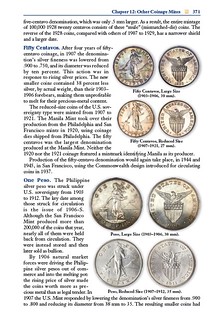
Each of these books, and others, focused on one or several parts of the giant tapestry of the United States and its mints. Before the Guide Book of the United States Mint, though, there was no single book that brought together all of these subjects and more, in vibrant full color and in fascinating depth, connecting the water-, horse-, and man-powered machines of the 1600s and 1700s with today’s massive Gräbener presses that strike three-inch silver coins with 500 metric tons of pressure. Our choice of author for this complex undertaking was easy. There is no better craftsman for such a volume than Q. David Bowers himself—Whitman Publishing’s numismatic director, after whom the popular Bowers Series of references is named. For more than 60 years Bowers has made the study of American coinage his life’s work. He’s known many of the Mint’s directors, superintendents, sculptors, and chief engravers as personal friends. In recent years I’ve had the honor of traveling with Dave on research missions to each of the Mint’s operating facilities, in Philadelphia, Denver, San Francisco, and West Point, as well as its headquarters in Washington, D.C., with the blessing of its directors and public-affairs officers. The insight we’ve gained from these recent studies is icing on the cake for Dave’s readers. His already remarkable knowledge is constantly expanding, and he shares that knowledge generously. His first-hand interviews with Mint personnel going back to the 1960s, plus decades of archived research at his fingertips (accessible with a photographic memory), are updated by frequent communication with Mint staff and ongoing study of new issues. The result is a historical record that lives and breathes. It is a landscape painting of the U.S. Mint stretching back to the colonial era but also as close as today’s dimes and quarters jangling in our pockets. The Guide Book of the United States Mint, like those coins, is for every American—artistic but also useful, and a tangible expression of our nation’s history. A Guide Book of the United States Mint
For more information, or to preorder, see:
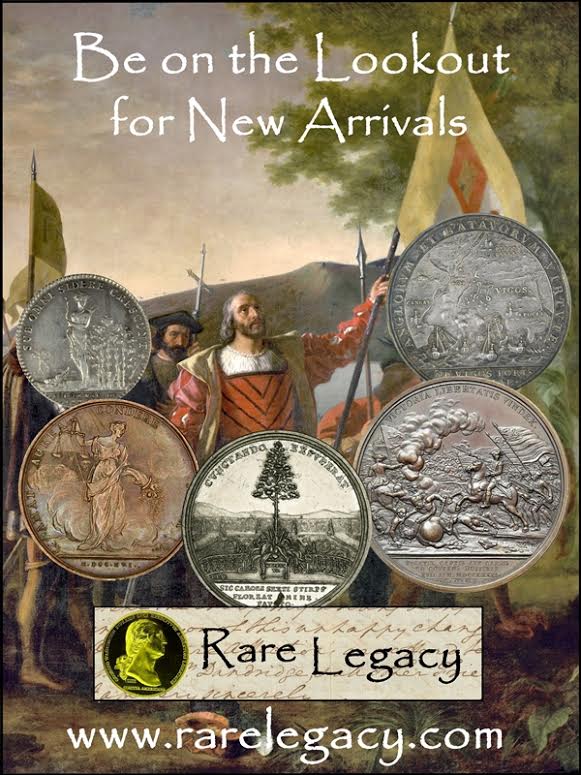
Wayne Homren, Editor The Numismatic Bibliomania Society is a non-profit organization promoting numismatic literature. See our web site at coinbooks.org. To submit items for publication in The E-Sylum, write to the Editor at this address: whomren@gmail.com To subscribe go to: https://my.binhost.com/lists/listinfo/esylum All Rights Reserved. NBS Home Page Contact the NBS webmaster 
|

